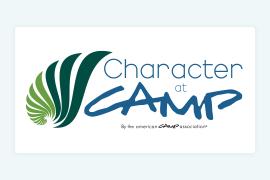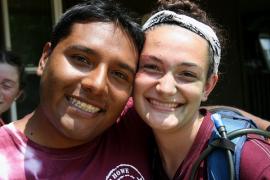This blog is part of a series that gives a snapshot of the results of the Sites, Facilities, and Programs survey completed by 2,426 ACA-accredited camps.
Also check out Part 1, Part 2, and Part 3.
The final bell of the school year rings and excitement is in the air. No more homework, outdoor play is no longer constrained to a fifteen-minute recess, and the opportunities are endless. Seems perfect, right? Wrong. Unfortunately, when kids break for summer vacation, they are more likely to get less physical activity than they do during the school year. While this trend seems to be discouraging, one place where healthy habits can be fostered is CAMP!
Health & Wellness at Camp
The results of the 2016 Sites, Facilities, and Programs survey report that nearly all (99 percent) residential camps and about 72 percent of day camps regularly offer healthy food choices or provide food options that support various diets including nut-free, gluten free, vegetarian or vegan. In regards to physical activity, both overnight and day camps reported that campers are engaged in three or more hours of intense physical activity per day, which is consistent with new research published in the American Journal of Preventive Medicine that shows that day campers get more physical activity than the national average. This is a very exciting trend for the camp industry!
In addition to physical activity and nutrition, findings from the 2017 Site, Facilities, and Programs Survey suggest there are other ways camps promote wellness among campers and staff. Most camps (78 percent of day camps and 86 percent of overnight camps) do not provide Internet access to campers. In exchange for time spent on the Internet, campers are likely engaging in meaningful relationships, spending more learning or improving skills, and enjoying the outdoors. Many residential camps also emphasize the importance of sleep and downtime through rest periods and consistent bedtime routines. Camps also allow for friendships, mentorships, and coaching, thus providing campers with strong social networks. Strong social support systems encourage healthy development in youth. What other aspects of your camp program are contributing campers’ health and wellness?
Easier Said Than Done
There are also lots of challenges to making sure campers and staff stay safe and healthy at camp and outside of camp.
Finding new ways to encourage wellness at your camp is important. Here are a few ideas:
- At meal times, encourage healthy eating through a color game. Staff can encourage campers to fill their plates with as many colors as possible. (Of course, the camper must eat the food for it to count!). Maybe partner campers up so there is motivation from peers.
- Perhaps your camp has access to or can gain access to step counters. Have a camp-wide competition to see who can tally the most steps.
- At the end of an activity or during a transition period, find creative ways to encourage movement from simple games, stretches, or safe competitions.
Staff Are Important Too
If we want to have healthy campers, you must have healthy staff. Often, staff members are so involved with their campers that they forget to take care of themselves. Providing healthy food options to the campers is great, but it is also important that the adult staff have the proper nutrition available so that they can perform at their best. Similarly, encouraging staff members to engage in physical activity during their time often can assist in the creation of a fully-engaged staff members. Lastly, just as sleep and downtime are important to campers, leaders of camp must convey to their staff the importance of rest. Healthy and happy staff = healthy and happy campers!
For more data on health & wellness at camp, check out the 2017 Sites, Programs, and Facilities full report.
Melanie Gauci, MS, is a Master’s student studying Parks, Recreation, and Tourism and is currently a graduate assistant for the American Camp Association. I have also spent four summers at Camp Walt Whitman in New Hampshire and a season working for Nature’s Classroom at Camp Muskingum in Ohio.
Photo courtesy of Whippoorwill Farm Day Camp in Fairview, TN.
Thanks to our research partner, Redwoods.
Additional thanks goes to our research supporter, Chaco.
The views and opinions expressed by contributors are their own and do not necessarily reflect the views of the American Camp Association or ACA employees.





